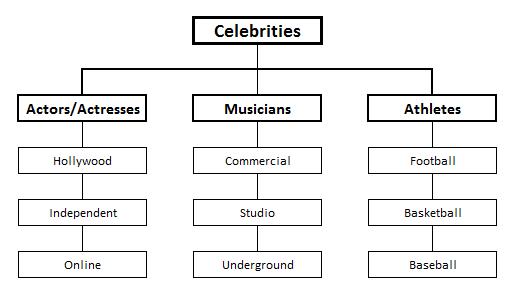-
 9 min. read
9 min. read
-
 Trevin Shirey
Trevin Shirey VP of Marketing
VP of Marketing
- Trevin serves as the VP of Marketing at WebFX. He has worked on over 450 marketing campaigns and has been building websites for over 25 years. His work has been featured by Search Engine Land, USA Today, Fast Company and Inc.
Newspapers and media outlets have more than nine lives. The Internet was supposed to kill newspapers off a long time ago, but they stubbornly refuse to die. Is it because they are such a vital pillar of our government and society?
That’s up for debate, but at least part of the reason many news organizations are still thriving is because of their ability to adapt. While the rise of the web brought challenges to traditional news and reporting, it also brought with it an endless amount of opportunity. The pivot by many leading news organizations from traditional outlets to content marketing machines is an inspiring one that can teach businesses and marketers several valuable lessons.
Here’s a look at key marketing tactics that are working right now as growth drivers in the digital news world.
Information Architecture With a Dash of SEO
This is an older school tactic that a number of newspapers have caught on to. If there’s a breaking news story, an authoritative newspaper doesn’t have to do a ton outside of a decent page title to rank for something like [wildfire in Colorado]. Ongoing people, places and things are a different beast, however.
Most search queries don’t easily match up to a recent or breaking news story and are much broader like [supreme court news] or [jack dorsey news]. Ranking highly for a breaking news story can grow your traffic like wildfire, but nothing beats a steady stream of search traffic coming into topic pages every single day.  Search [elon musk news] and you’ll see a number of news giants following a similar formula to one another.
Search [elon musk news] and you’ll see a number of news giants following a similar formula to one another.
Notable news figures get their own topic page with lists of recent articles and updates that reference them. One interesting trend is that news sites seem to be aggressively expanding their efforts with topic pages. Oftentimes anytime a tag is added to an article an entire new page is created and optimized on the domain.
While this is smart structurally, you end up with random, mostly empty topic pages about things like “fluorescent”. The New York Times is using a more tactical strategy. Instead of only having auto-generated pages, they have unique content on thousands of topic pages. Some of these are geo-targeted to states or cities.
For instance, NYT has non-local page 1 rankings for [united airlines] and [walmart] in Google.  NYTimes.com also ranks on page 1 in Google for [breaking news Utah] and a host of similar keywords with category pages such as the Utah news page. These types of pages go back to one of the fundamentals of website SEO: proper site structure.
NYTimes.com also ranks on page 1 in Google for [breaking news Utah] and a host of similar keywords with category pages such as the Utah news page. These types of pages go back to one of the fundamentals of website SEO: proper site structure.
If you are writing a lot about bananas and oranges, for example, you should probably have a site that has an informational page about fruit as well.

It’s beneficial for both your marketing and your users if you take the time to fill in the “informational blanks” that can be left on a particular site. Part of this comes back to information architecture and making sure a site is able to dynamically organize all content about a certain topic or product in a way that makes it easy for users and search engine crawlers to find. Make your tag, category, and archive pages valuable resources by adding unique and informative content to them.
You are already writing new content pages, and implementing a smart site structure is the only way to maximize the value you’ll get from those efforts.
Increased Amount of Clickbait & Linkbait Pieces
 Clickbait isn’t just a tactic used by desperate bloggers or Upworthy: newspapers have long employed attention-grabbing headlines as a way to generate revenue. That said, the line between Upworthy-type clickbait and classic newspaper headlines has started to blur.
Clickbait isn’t just a tactic used by desperate bloggers or Upworthy: newspapers have long employed attention-grabbing headlines as a way to generate revenue. That said, the line between Upworthy-type clickbait and classic newspaper headlines has started to blur.

Clickbait isn’t the right move for every business, and is likely a tactic that has already reached its peak effectiveness. That said, presentation is always going to be 90% of the battle when trying to earn traction in social media.
Writing an article called “A Look At Weird Breakfast Cereals” isn’t going to move the needle on Twitter or Facebook the same way “10 Bizarre Breakfast Cereals You Won’t Believe Ever Existed” will. Maximize the value from every new article or blog post you write by taking the extra 10 minutes to put on your marketer hat and think critically about the best way to frame a piece of content. Look at things from the viewpoint of your target market.
What’s a catchy title of the article they would be excited to see come across their Twitter feed? Find a way to break through the large amount of content noise that exists by being bold.
The Rise of Microsites
 Instead of trying to pivot a traditional news site toward a “Web 2.0” approach, several news organizations have taken a different approach and created separate websites that have morphed into massive traffic drivers for them. One of the best examples is USA Today’s ForTheWin.
Instead of trying to pivot a traditional news site toward a “Web 2.0” approach, several news organizations have taken a different approach and created separate websites that have morphed into massive traffic drivers for them. One of the best examples is USA Today’s ForTheWin.
Chock full of videos, GIFs, clickbait headlines, and gossip, it’s a whole different ballgame from USA Today’s traditional sports coverage. USA Today has created what the modern web user demands: a simple site with quick-hitting news blurbs that are easy to share. Rather than trying to re-cast their existing sports news mold, they started from scratch and let the market dictate how to do sports news.
FTW has been a huge win for USA Today:
Between December 2012 and December 2013, its sports audience online has grown from 6.6 million unique visitors to 17.4 million, according to comScore. It has also launched another experiment in mobile news, Q, which aggregates NFL-related sports news in mobile-friendly short bursts. That has helped USA Today’s sports group to rise to the No.
5 sports property on the all-important comScore rankings, besting CBS Sports and others.
ESPN has made similar investments in Grantland and FiveThirtyEight. These microsites are part of a growing trend online towards niche communities. It’s easy to find large, one-size fits all communities for people who want to say everything about everything (Facebook or Mashable).
But more meaningful and communal discussions are happening on sites with a more singular focus around a particular topic of interest. You see this in the rise of subreddits and interest-based community sites like Hacker News.
Engaging Longform Content
 Longform content has evolved from something you’d read in a magazine or Sunday newspaper to a type of content that merits its own section on a newspaper’s website. The web is a great platform for long, 1,500+ word stories combined with rich media like images, interactive maps or graphics, and videos.
Longform content has evolved from something you’d read in a magazine or Sunday newspaper to a type of content that merits its own section on a newspaper’s website. The web is a great platform for long, 1,500+ word stories combined with rich media like images, interactive maps or graphics, and videos.
One of the first big success stories that falls into this new breed of longform content was the NYTimes “Snowfall” piece that tells the story of a 2012 avalance in Washington. Snowfall has earned over 430,000 links, and remains one of the most successful examples of longform and interactive storytelling done in the news world.
Everyone wants to Snowfall now, every day, all desks – Jill Abramson, The New York Times
Others have been able to replicate the success of longer, meatier content. Sports Illustrated has a dedication section on their site filled with longform content that is updated several times a month with new stories.
 Al Jazeera is using a similar strategy, feeding new longform pieces into a dedicated area of their site each week. Longform content is an opportunity to combine storytelling with interactivity on a massive scale. News organizations that are successful at this understand the value of telling a story in multiple ways.
Al Jazeera is using a similar strategy, feeding new longform pieces into a dedicated area of their site each week. Longform content is an opportunity to combine storytelling with interactivity on a massive scale. News organizations that are successful at this understand the value of telling a story in multiple ways.
Well-done longform content appeals to people who prefer all methods of digesting information, through reading, visual aid and audio.  Storytelling is a great marketing aid because a great story never gets old. Longform pieces tend to be evergreen and people love to read and share them years after they are initially published.
Storytelling is a great marketing aid because a great story never gets old. Longform pieces tend to be evergreen and people love to read and share them years after they are initially published.
The quick evolution of major news organizations over the last decade gives us lots of examples on the importance of having an adaptive marketing strategy. Platforms change rapidly, and finding a balance between moving slowly and moving too quickly is difficult. When you time it right, though, your chances for success can skyrocket.
Whether you work in enterprise news or are a solo entrepreneur, don’t be afraid to change things up with your web marketing strategy. Instead of churning out 500-700 word blog posts for your site, invest some time and write a longform piece about your business’s story. Create a new section on your website about your manufacturing process, your employees, or your ingredients.
Examining the evolution of online media and news consumption doesn’t only serve as a reminder of how fast technology changes: it reminds us how fast people change. Make sure your marketing choices are keeping pace.
-
 Trevin serves as the VP of Marketing at WebFX. He has worked on over 450 marketing campaigns and has been building websites for over 25 years. His work has been featured by Search Engine Land, USA Today, Fast Company and Inc.
Trevin serves as the VP of Marketing at WebFX. He has worked on over 450 marketing campaigns and has been building websites for over 25 years. His work has been featured by Search Engine Land, USA Today, Fast Company and Inc. -

WebFX is a full-service marketing agency with 1,100+ client reviews and a 4.9-star rating on Clutch! Find out how our expert team and revenue-accelerating tech can drive results for you! Learn more
Try our free Marketing Calculator
Craft a tailored online marketing strategy! Utilize our free Internet marketing calculator for a custom plan based on your location, reach, timeframe, and budget.
Plan Your Marketing Budget

Maximize Your Marketing ROI
Claim your free eBook packed with proven strategies to boost your marketing efforts.
Get the GuideTry our free Marketing Calculator
Craft a tailored online marketing strategy! Utilize our free Internet marketing calculator for a custom plan based on your location, reach, timeframe, and budget.
Plan Your Marketing Budget





